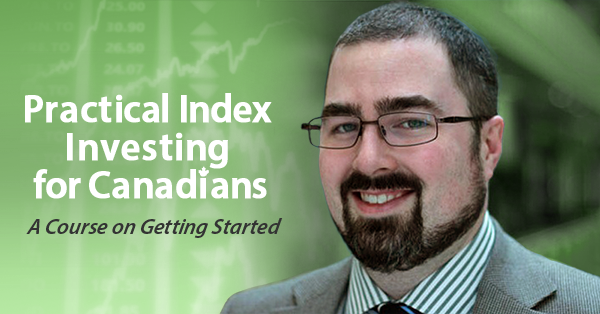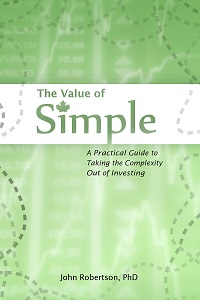2014 Active Investing Update: Execution Risk
July 6th, 2015 by Potato2014 was a busy, busy year. I wrote and released a book, in addition to all the other stuff going on in my life like being a dad, holding down a full-time job, taking on freelance/coaching clients, etc.1 So I did not have much time left for active investing, and that was one factor in putting in a rather shoddy under-performance of 8.6% vs my benchmark of a 50/50 mix of the Canadian and S&P500 e-series funds which pulled in almost double: 16.7%. Indeed, looking back through my notes from the year, active investing was almost entirely jettisoned from my life when the time crunch got bad. I spent almost as much time doing the bookkeeping and getting ready for tax season for my active portfolio in April as I did on researching new ideas or carefully following the ones I owned through the entire rest of the year. I did not listen to a single conference call all year. For over half of 2014 the time I invested on the active portfolio was precisely zero.
So this gets down to execution risk, another great reason to love simple index investing methods. Even if I did have a workable strategy to beat the index, and the smarts and emotional fortitude to follow through, there are still lots of ways to muck it all up (like not really doing it at all and leaving things on autopilot). That’s an added risk to active investing that we don’t talk about much, and a difficult one to accept: it’s all too easy to say something like “oh, if I had spent more time on it, I would have done better.” But the fact is that I didn’t, and I put myself into a situation where I could under-perform (and also granting that I may have underperformed no matter how much time I put in) by choosing to invest actively. It wasn’t a down year — I still made decent money, which may make it all the easier to fool myself if I wasn’t comparing to a benchmark.
I was overweight oil-related stocks, which hurt this year, but Canexus is a big stand-out mistake. It was a large part of my portfolio (a big part of out-performance in past years), and I just sat on it while it fell 55% in 2014 (and continued to decline in 2015). It’s stunning just how much value was destroyed by their attempt to build an oil-by-rail transloading terminal: over $350M invested, and it sold this year for $75M. Looking back (with the benefit of knowing that there were more declines to come), I should have seen the writing on the wall closer to mid-2014 that this supposed side project was threatening the stable, cash-generating chemicals business that I liked in the first place. That would have been a loss for the year, but not a loss on the position — instead I completely ignored what was happening and lost a lot of money by the time I woke up to how bad things had gotten this year.
I’ve been cutting down the number of positions I hold in the active portfolio and putting more and more towards the passive portfolio, but have not yet gone fully passive — at this rate it will take me several years to wind down to that point. Especially given that I wrote a book on how passive investing works and is so easy to do I should probably just liquidate the active portfolio and go fully passive. As I was putting this post together, Regal (RLC) received a take-over offer, which helps offset some of the other idiot moves I’ve made. The proceeds from selling that have been rolled into the passive portfolio. I also took that opportunity to do a big re-balance: I’ve had a mix of TD e-series and ETFs for a while now, in part because the e-series are easier to buy on autopilot, or in small pieces as the market dips (an idiosyncratic move purely for psychological comfort). I’ve now liquidated the e-series and rolled everything into just four ETFs — and I’ll note for new readers that my passive portfolio is in my TFSA and RRSP so there were no tax consequences to this roll-over, but doing the same thing in a non-registered account would have made me realize (and pay tax on) any capital gains the e-series funds had accumulated. It’s likely I will once again build up some e-series through the next year or two and do another shuffle to roll them into ETFs, or I might finally get into the habit of buying an ETF every few months for the passive portfolio.
This is two years in a row now of under-performance. My cumulative out-performance (“alpha”) is still positive, and by enough still that it raises an interesting conundrum, related to the previous posts on freelancing: in 2014 and the first half of 2015, I’ve ignored managing my active portfolio for the sure thing of freelance work (and the not-so-sure thing of the book). However, if I was able to maintain the 5-year average of out-performance from the years where I was working at it (which conveniently ignores this, my second-worst year relatively speaking), my time would actually be better spent doing investing research than editing/writing/coaching work. Of course, if I were to “risk adjust” that, then I’m back to taking the sure thing of working for a living and indexing my investments.
1. For that matter 2015 has been pretty hectic too, which is why this update on performance is coming 6 months after the fact.
Link to 2013’s update.


 Questrade: use QPass 356624159378948
Questrade: use QPass 356624159378948 Passiv is a tool that can connect to your Questrade account and make it easier to track and rebalance your portfolio, including the ability to make one-click trades.
Passiv is a tool that can connect to your Questrade account and make it easier to track and rebalance your portfolio, including the ability to make one-click trades.